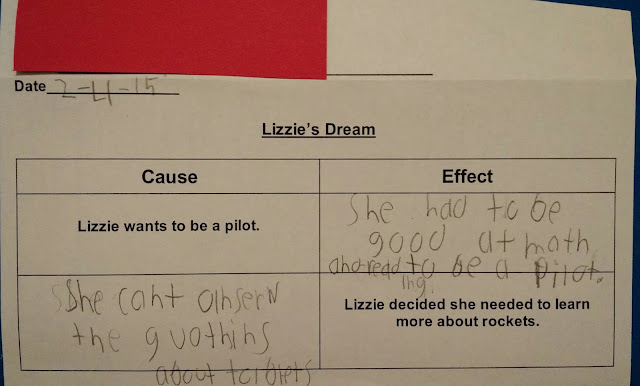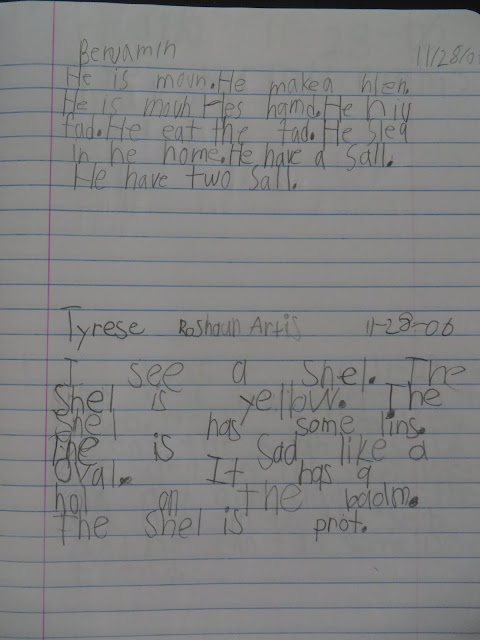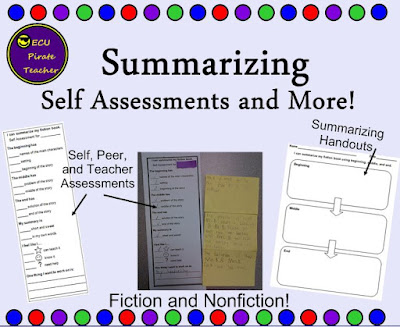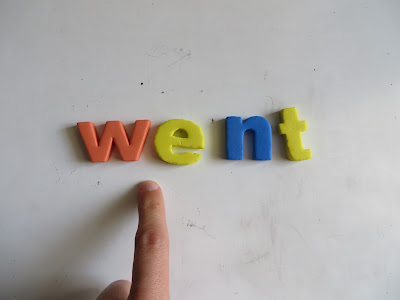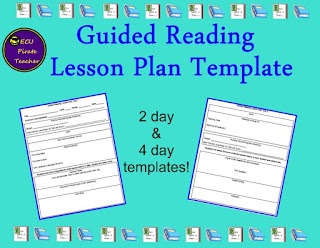This chapter is definitely a must read if you teach early guided reading students. Early guided reading students are students reading levels D-I (DRA 5-16). My favorite part about this chapter is where Jan Richardson lays out a two day guided reading plan (p. 116-133). She literally lays everything out for you!!
My guided reading lessons are based off of her book so I wanted to share an example of a guided reading lesson for a level H group. Here is what the lesson plan looks like:
(The numbers are not usually there. I have numbered the sections as I'm going to discuss them below.)
Day 1
Day 2
SIOP/Guided Writing Page
I fold it in half and display it on my guided reading table so students can see it.
Here we go! Day 1!
On day 1 of a lesson plan, we start with a familiar reading. This might be a book they read last week or earlier in the current week. I pick one student to do a running record with while the other students are reading independently.
See section 1
After my running record and conference with the student is over, I discuss the SIOP with students which lets them know their job for the guided reading lesson. Then, we go over our sight word.
See section 2
I give each student a whiteboard with the magnetic letters already spelling the word. After we read the word together, I have students mix the letters up and pass their boards to their neighbor.
Students fix their boards and slow-check them (slowly say the word while dragging their finger underneath the letters to check the spelling).
Next, we do what's missing! I take a letter away and students guess what letter is missing!
Then, we do 'table writing' where students use two fingers and write the word on the table (sometimes we do the air, sometimes our arm, sometimes our leg, etc.). After 'table writing', students write the word on their whiteboards. All of this only takes about a minute or two.
Now, we are ready for our book! If there is prior knowledge I feel students need to know (ex: book is about white water rafting and I know most students have never been), we will have a quick discussion about it to get students ready for the book. If the book is about something students should be able to relate to, I start with my hook to get students excited about the book. Then, I pass out the books and we do a picture walk. During the picture walk, I will point out words that are difficult to decode, new vocabulary, and any language structure that I feel students would have a hard time understanding.
See section 3
Then, it is reading time!! Students read independently while I listen in. I write anecdotal notes while listening to students and also see if there are any additional teaching points that need to be addressed. If a student finishes reading before I'm ready to move on, they are instructed to read their books again.
After we are done reading, I go over my teaching point(s). I try to spotlight a student who has used the teaching point I'm teaching. For example, Ava first said teeth for tooth on page 3 of her book. She soon realized it didn't make sense, went back, reread, and fixed the word to make it make sense.
See section 4
After my teaching point, we answer a higher order question. I use one question for day 1 and the other question for day 2. Then, it is word work time. This lesson's word work was about using sound boxes to spell five letter words with blends.
See section 4
Now, it is time for Day 2!!!
Day 2 starts with reviewing our SIOP, sight word, and teaching point from Day 1. Then, I do a running record on the current book while the rest of the students read independently.
See section 5
Finally, we end our lesson with higher order questioning and writing. As I said earlier, I pick one higher order question to ask on day one and another for day 2.
For the writing part of this lesson, I flipped my SIOP/Writing paper to a written comprehension question. We worked together to highlight parts of the question that we wanted to use in our answer. Then, students independently answered the question as I individually conferenced with students about their writing.
When I listen in on students reading, I take anecdotal notes which I record on page 2 of my lesson plan. These are simple notes that help me determine teaching points for each student. For example, you can see where Madison L. was using meaning and visual cues, but the word wasn't grammatically correct. This note helps remind me that I need to be working on making her aware of grammatical issues when reading. I tend to refer back to past anecdotal notes when planning lessons and reflecting on individual students.
See section 7
The last thing I do is reflect on my lesson. My reflections are usually based on the whole group, not individual students. I tend to comment on things that need to be worked on in future lessons or things that the whole group has a good understanding of.
See section 8
And there you have it! A 2 day lesson plan!
Check out each week of the book study by clicking the links below!













